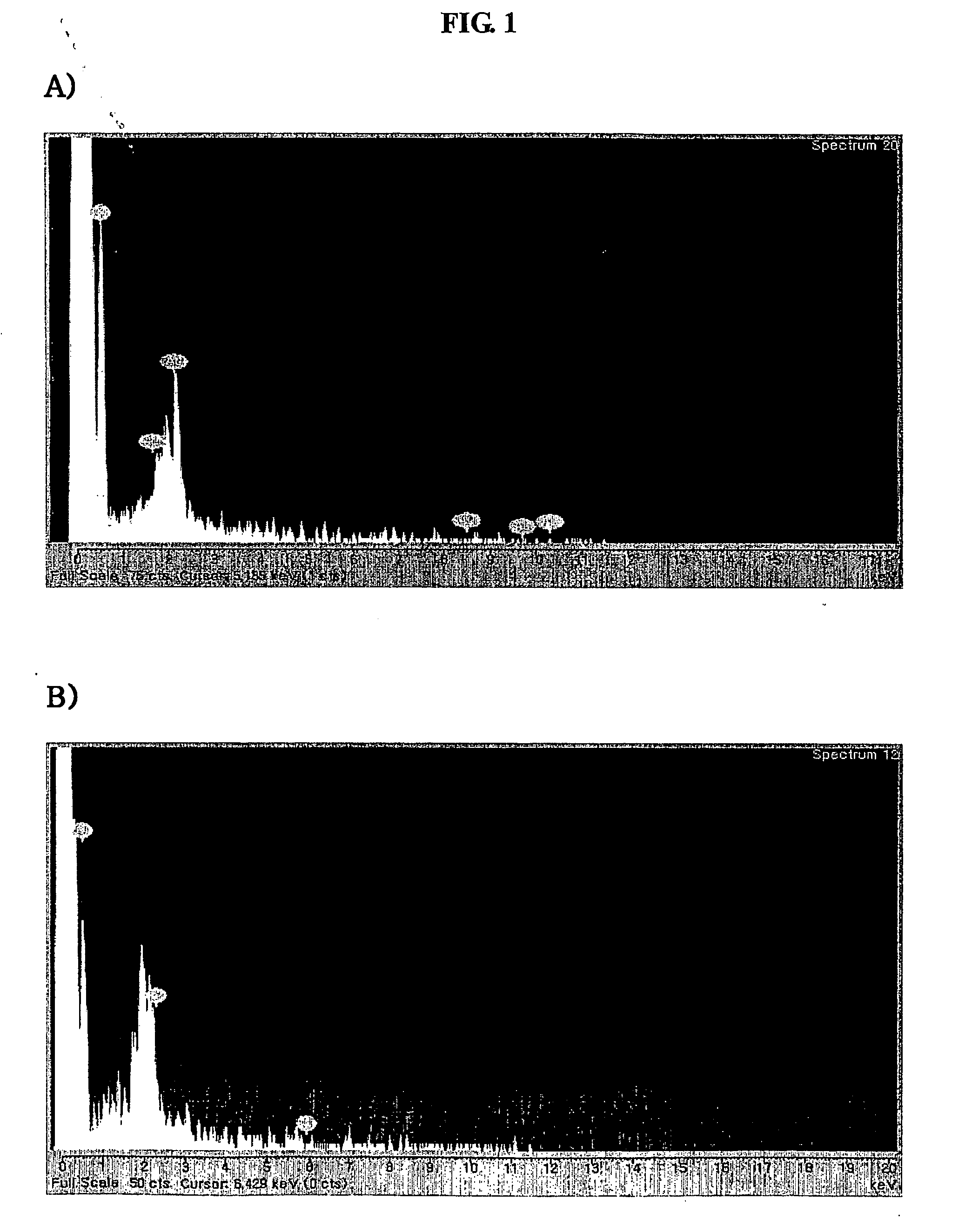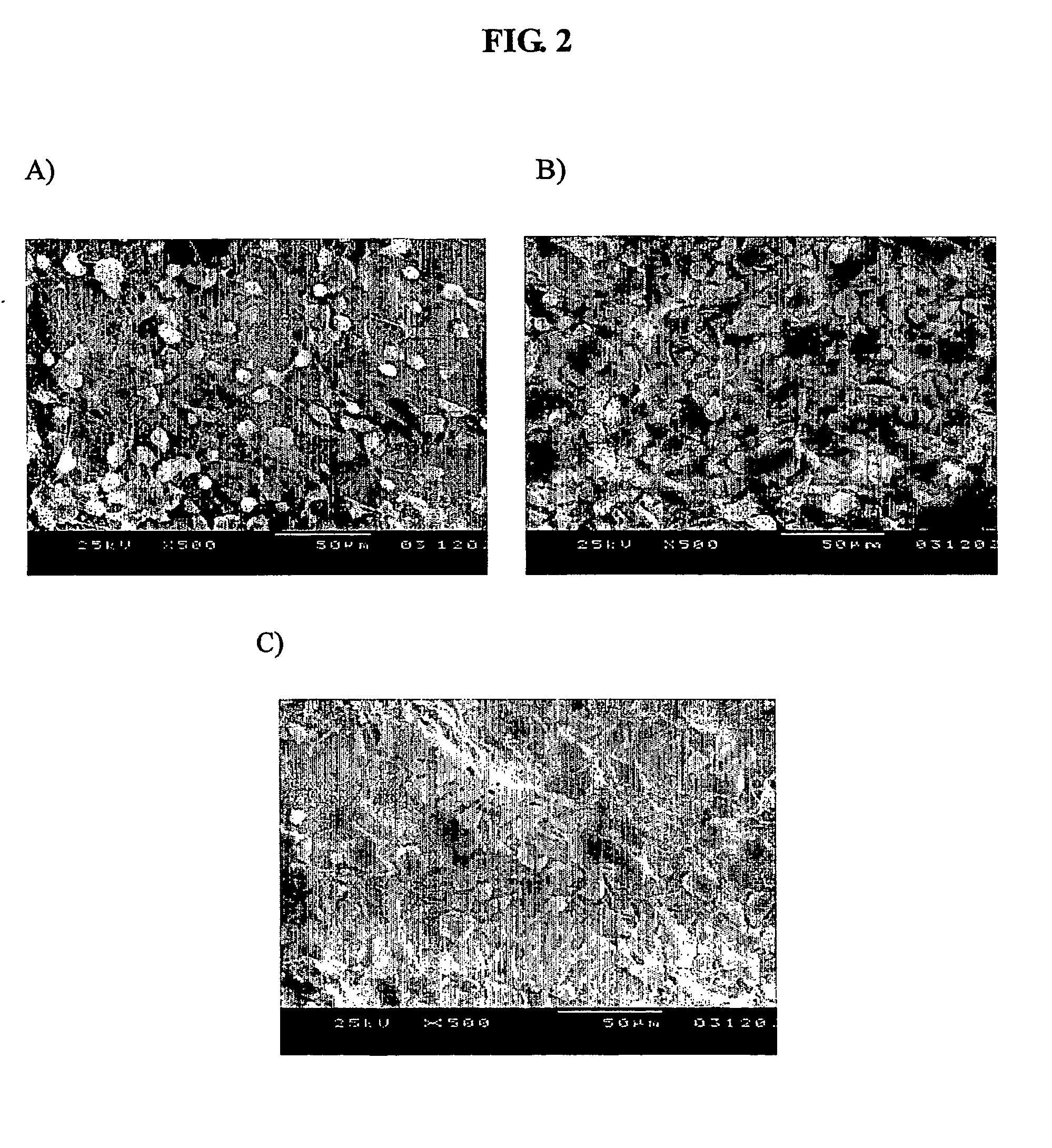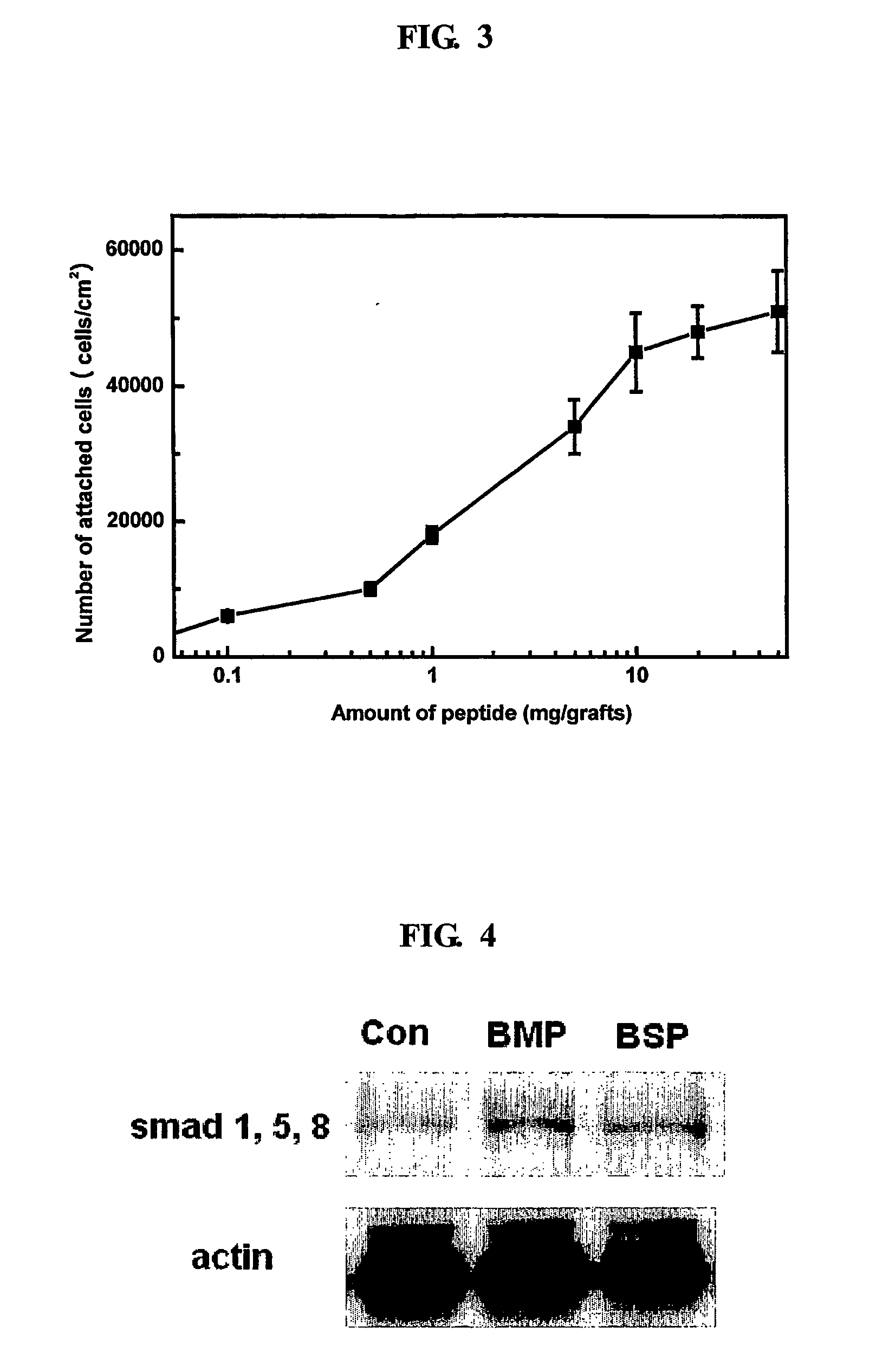Bone graft and scaffolding materials immobilized with osteogenesis enhancing peptides on the surface
a technology of osteogenesis and scaffolding materials, which is applied in the direction of peptide/protein ingredients, dental implants, joint implants, etc., can solve the problems of side effects, reduced activity, loss of tooth function, etc., and achieve stable and lasting pharmacological effects
- Summary
- Abstract
- Description
- Claims
- Application Information
AI Technical Summary
Benefits of technology
Problems solved by technology
Method used
Image
Examples
example 1
Immobilization of Cell Adhesive RGD Peptides on Bovine Bone-Derived Bone Mineral Particles
[0037] Bovine bone-derived bone mineral particles were washed with ethanol under reduced pressure and then left to stand in a vacuum oven at 100° C. for 20 hours so as to remove impurities from the surface. The surface of the bone mineral particles was treated with a solution of 3-aminopropyl ethoxysilane (APTES) dissolved in hexane, followed by washing. This resulted in the formation of amine residues on the surface, to which crosslinker BMB was then added and bound. The crosslinker-bound bone mineral particles were allowed to react with peptides of SEQ ID NO: 1 and SEQ ID NO: 2 for 12 hours, followed by washing. This yielded the bone mineral particles having the peptides immobilized on the surface.
example 2
Immobilization of Cell Adhesive RGD Peptides on Synthetic Hydroxyapatite and Tricalcium Phosphate
[0038] Bone graft powders of synthetic hydroxyapatite and tricalcium phosphate were washed with ethanol under reduced pressure and then left to stand in a vacuum oven at 100° C. so as to remove impurities from the surface. The surface of the bone mineral particles was treated with a solution of 3-aminopropyl ethoxysilane (APTES) in hexane, followed by washing. This resulted in the formation of amine residues on the surface, to which crosslinker BMB was then added and bound. The bone mineral particles with the bound crosslinker were allowed to react with peptides of SEQ ID NO: 1 and SEQ ID NO: 2 for 12 hours, followed by washing. This yielded the bone mineral particles having the peptides immobilized on the surface.
example 3
Immobilization of Cell Adhesive RGD Peptides on Bone Graft Material of Chitosan
[0039] A bone graft material of chitosan prepared in the form of a powdery or porous scaffold was added to 2 ml of phosphate buffer (pH 7.4) to hydrate the surface. To this solution, sulfo-SMCC as a crosslinker was added at a concentration of 5 mg / ml, and the mixture was stirred for 2 hours to introduce functional groups on the surface of the chitosan bone graft material. After 2 hours of reaction at ambient temperature, the chitosan bone graft material was washed and allowed to react with a solution 10 mg of a peptide of SEQ ID NO: 1 dissolved in 100 μl of phosphate buffer for 24 hours. Then, the reaction was washed, thus yielding the chitosan bone graft material with the peptide immobilized thereon.
PUM
| Property | Measurement | Unit |
|---|---|---|
| pH | aaaaa | aaaaa |
| concentration | aaaaa | aaaaa |
| pH | aaaaa | aaaaa |
Abstract
Description
Claims
Application Information
 Login to View More
Login to View More - R&D
- Intellectual Property
- Life Sciences
- Materials
- Tech Scout
- Unparalleled Data Quality
- Higher Quality Content
- 60% Fewer Hallucinations
Browse by: Latest US Patents, China's latest patents, Technical Efficacy Thesaurus, Application Domain, Technology Topic, Popular Technical Reports.
© 2025 PatSnap. All rights reserved.Legal|Privacy policy|Modern Slavery Act Transparency Statement|Sitemap|About US| Contact US: help@patsnap.com



